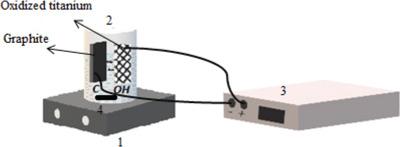当前位置:
X-MOL 学术
›
Clean - Soil Air Water
›
论文详情
Our official English website, www.x-mol.net, welcomes your
feedback! (Note: you will need to create a separate account there.)
Removal of Selected Micropollutants from Synthetic Wastewater by Electrooxidation Using Oxidized Titanium and Graphite Electrodes
Clean - Soil Air Water ( IF 1.5 ) Pub Date : 2020-05-13 , DOI: 10.1002/clen.201900378 Nouha Bakaraki Turan 1 , Abdulkadir Çaglak 1 , Sezgin Bakirdere 2 , Güleda Önkal Engin 1
Clean - Soil Air Water ( IF 1.5 ) Pub Date : 2020-05-13 , DOI: 10.1002/clen.201900378 Nouha Bakaraki Turan 1 , Abdulkadir Çaglak 1 , Sezgin Bakirdere 2 , Güleda Önkal Engin 1
Affiliation

|
Micropollutants cover a variety of compounds that mainly originate from the pharmaceutical and agricultural sectors. Even at trace concentrations, the discharge of micropollutants into water bodies pose a serious threat to the environment and human health. Their removal from wastewaters at treatment plants before their discharge into the environment has become one of the leading topics of research. Physical, chemical, and biological treatment methods have been listed in the literature for efficient removal of a variety of pollutants. In this study, seven micropollutants, namely 4‐tert‐octylphenol, atrazine, 2,4,6‐trichlorophenol, fluoxetine, estrone, penconazole, and di‐n‐octyl phthalate, are spiked into municipal simulated synthetic wastewater and treated by a laboratory‐scale electrooxidation (EO) system using oxidized titanium and graphite electrode as anode and cathode, respectively. Sensitive determination of the selected micropollutants by gas chromatography–mass spectrometry (GC‐MS) before and after treatment is performed after their pre‐concentration using an eco‐friendly switchable solvent liquid‐phase microextraction method (SSLPME). The pH value, applied current, and reaction period are optimized to enhance the removal efficiency of micropollutants. Results show that the highest removal efficiency of all micropollutants is obtained at pH 3, 20 min reaction period, and 3 A applied current. The operational costs are also investigated in this study.
中文翻译:

氧化钛和石墨电极电氧化去除合成废水中的微量污染物
微量污染物包括多种主要来自制药和农业领域的化合物。即使在微量的情况下,微量污染物向水体中的排放也会对环境和人类健康构成严重威胁。在将废水排放到环境中之前从处理厂的废水中去除废水已成为研究的主要课题之一。物理,化学和生物处理方法已在文献中列出,可有效去除各种污染物。在这项研究中,7种微量,即4-叔辛基苯酚,莠去津,2,4,6-三氯酚,氟西汀,雌酮,戊菌唑,和二- Ñ将邻苯二甲酸正辛酯加到市政模拟合成废水中,并通过实验室规模的电氧化(EO)系统进行处理,分别使用氧化钛和石墨电极作为阳极和阴极。使用生态友好型可切换溶剂液相微萃取法(SSLPME)在预浓缩后,通过气相色谱-质谱法(GC-MS)可以在处理前后对选定的微量污染物进行灵敏测定。优化了pH值,施加的电流和反应时间,以提高微污染物的去除效率。结果表明,在pH 3、20分钟反应时间和3 A施加电流下,所有微污染物的去除效率最高。在这项研究中还对运营成本进行了调查。
更新日期:2020-05-13
中文翻译:

氧化钛和石墨电极电氧化去除合成废水中的微量污染物
微量污染物包括多种主要来自制药和农业领域的化合物。即使在微量的情况下,微量污染物向水体中的排放也会对环境和人类健康构成严重威胁。在将废水排放到环境中之前从处理厂的废水中去除废水已成为研究的主要课题之一。物理,化学和生物处理方法已在文献中列出,可有效去除各种污染物。在这项研究中,7种微量,即4-叔辛基苯酚,莠去津,2,4,6-三氯酚,氟西汀,雌酮,戊菌唑,和二- Ñ将邻苯二甲酸正辛酯加到市政模拟合成废水中,并通过实验室规模的电氧化(EO)系统进行处理,分别使用氧化钛和石墨电极作为阳极和阴极。使用生态友好型可切换溶剂液相微萃取法(SSLPME)在预浓缩后,通过气相色谱-质谱法(GC-MS)可以在处理前后对选定的微量污染物进行灵敏测定。优化了pH值,施加的电流和反应时间,以提高微污染物的去除效率。结果表明,在pH 3、20分钟反应时间和3 A施加电流下,所有微污染物的去除效率最高。在这项研究中还对运营成本进行了调查。











































 京公网安备 11010802027423号
京公网安备 11010802027423号